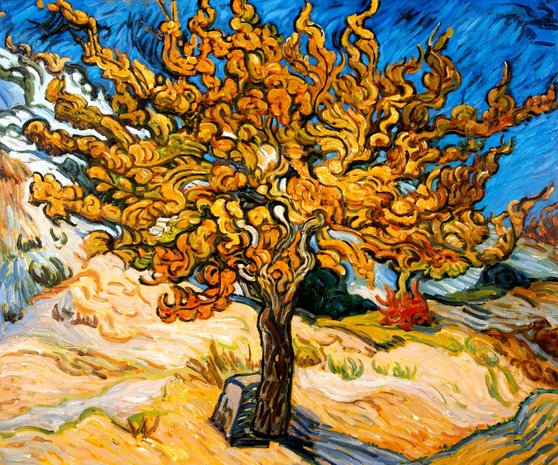-
Posts
3,232 -
Joined
-
Last visited
-
Days Won
39
GolfSpy MPR last won the day on September 28 2023
GolfSpy MPR had the most liked content!
About GolfSpy MPR

- Birthday 07/21/1979
Contact Methods
-
Twitter
https://www.twitter.com/MRileyGolf
-
Instagram
https://www.instagram.com/mpatrickriley/
Profile Information
-
Gender
Male
-
Location
Wakefield, MI, USA
Player Profile
-
Swing Speed
101-110 mph
-
Handicap
9.8
-
Frequency of Play/Practice
Multiple times per week
-
Player Type
Competitive
-
Biggest Strength
Short Game
-
Biggest Weakness
Driver/Off the Tee
-
Fitted for Clubs
Yes
GolfSpy MPR's Achievements

(5/14)
14.2k
Reputation
-
Did a half two summers ago. Didn't get as much running in last year, but with our early snow melt this year, aiming to get in much more.
-
All done. Need to be faster.
-
Morning all! Finished my typical shot of espresso: now about to stretch and run five miles. Hoping (hoping!) to work my way up to a marathon this fall. Not particularly interested in entering an event; just want to see if I can run the distance. For us, this has been an early spring, so trying to take advantage of the extra running time.
-

L.A.B. DF3 Putters - 2024 Forum Review
GolfSpy MPR replied to GolfSpy_APH's topic in Forum Testing Reviews
Hmmm. This is something that worries me. Obviously, if the performance advantage is indisputable, I can deal with it. But I don't love high pitches on putters. This is something my current Edel gets exactly right: not mushy, not pingy. I'll certainly be doing some sound tests when my DF3 arrives. -

L.A.B. DF3 Putters - 2024 Forum Review
GolfSpy MPR replied to GolfSpy_APH's topic in Forum Testing Reviews
Spent way too much time building this: a spreadsheet to track numbers from HackMotion, Blast, and ExPutt, to combine all of that data into a single score: https://docs.google.com/spreadsheets/d/1Fam_m2w-Fq-EX6nDLa82TnbgRot1X5Qs2ZJOdzdTfag/edit?usp=sharing Here's my plan: this is built around the ExPutt "Analysis" feature. When you turn on Analysis in the Practice mode, it gives you a sequence of 18 random-distance straight putts. At the conclusion, it spits out a report on your distance control, face angle, and path. My intention is to strap on my HackMotion and attach the Blast sensor to whatever putter I'm testing. I'll turn on practice mode and hit 10-15 random putts, just to get in the proper feel for each putter. Then I'll turn on Analysis and start the Blast and HackMotion apps. My goal will be to avoid looking at the HM and Blast numbers while I'm doing the 18 putts, so that I'm not consciously trying to correct those numbers. I do have to keep an eye on the apps, however: the Blast will occasionally miss a putt, and the HackMotion has a tendency to add a lot of ghost reads. If all goes well, I'll plan to repeat this exercise at least five times with both my Edel and Evnroll. Given that L.A.B. is currently predicting over a month between orders being placed and the arrival of the DF3, I should be able to collect all of that data before the L.A.B. arrives. Then I will also collect at least five sessions of data with the DF3. -

L.A.B. DF3 Putters - 2024 Forum Review
GolfSpy MPR replied to GolfSpy_APH's topic in Forum Testing Reviews
-

L.A.B. DF3 Putters - 2024 Forum Review
GolfSpy MPR replied to GolfSpy_APH's topic in Forum Testing Reviews
Plot twist: it's filled with hidden North Korean technology. -

L.A.B. DF3 Putters - 2024 Forum Review
GolfSpy MPR replied to GolfSpy_APH's topic in Forum Testing Reviews
One of the commentators on Facebook voiced his regret for not cleaning his ball on a 50-foot putt, where the mud marred his L.A.B. -

L.A.B. DF3 Putters - 2024 Forum Review
GolfSpy MPR replied to GolfSpy_APH's topic in Forum Testing Reviews
Just found a Facebook group for L.A.B. users/fans. One thread that I saw: a discussion of the durability of the aluminum heads. Not that they break or anything that dramatic, but that they're relatively easy to ding. I'm a diligent headcover-er, so I'm not terribly worried, but it's absolutely something we testers should note and report on. -

L.A.B. DF3 Putters - 2024 Forum Review
GolfSpy MPR replied to GolfSpy_APH's topic in Forum Testing Reviews
I'm not superstitious, but I am a little stitious, and having anything named "shanks" sitting in my golf bag, hanging out with my wedges and irons, seems like a bad idea to me -

L.A.B. DF3 Putters - 2024 Forum Review
GolfSpy MPR replied to GolfSpy_APH's topic in Forum Testing Reviews
This picture of the sole is amazing, because it shows a lot more sparkle (in the best sense) and texture than is suggested by a lot of other pictures. Looks awesome! -
Very, very, very cool. Years ago, I had the XDream mallet. Didn't love the sound, but I always thought the alignment aid was on to something useful. Would love to see them license that design (I assume they have a patent) to other OEMs.
-

L.A.B. DF3 Putters - 2024 Forum Review
GolfSpy MPR replied to GolfSpy_APH's topic in Forum Testing Reviews
OK, so my current name finalist list (with the red [putter] head theme): Winston Weasley Conan Vincent van Gogh-in With two more suggested by my daughter: Garrett (from Dude Perfect; of the guys in the group, he's my favorite: he's pro-coffee and seems to realize that it's absurd that he's approaching middle age while filming trick shots for a living) Red Skull (which I thought was an exceedingly cool name until I read the Wikipedia entry and found he's apparently a Nazi, which ends that name idea) -

L.A.B. DF3 Putters - 2024 Forum Review
GolfSpy MPR replied to GolfSpy_APH's topic in Forum Testing Reviews
-

Youtube golf vs the pro tours (PGA/LIV/LPGA/Champions/KFT)
GolfSpy MPR replied to StrokerAce's topic in The 19th Hole
It was shockingly dull, except for the outcome (not going to spoil it). I think I'm glad they didn't risk having announcers: that may have worked, but the odds are it would have been astonishingly cringey. My thought: Erik Anders Lang and Kyle Berkshire both used to produce course vlogs in which that would narrate the holes via voiceover in postproduction. I get that even the "entertainers" in this tournament were massively unlikely to be chatty during the round, given the stakes and opportunity in front of them. But have them watch the round a week later and capture their thoughts then, and weave that audio in. Someone on Twitter also suggested what NLU does with their Film Room series, which makes sense. The issue is that YouTube golf is awesome because it doesn't operates under the real-time constraints of broadcasting live golf. It was a weird decision to bring in a bunch of YouTube golfers (with their audiences) and then offer a product much more reminiscent of live golf (without any of the interesting features).

















